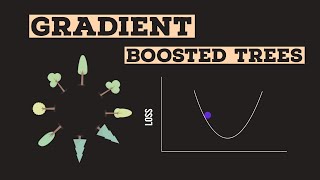-
Table of Contents
- Introduction
- The Impact of Hyperparameter Tuning on Gradient Boosting Performance
- Utilizing Gradient Boosting for Image Recognition
- Leveraging Gradient Boosting for Text Classification
- How to Use Gradient Boosting for Time Series Forecasting
- Exploring the Applications of Gradient Boosting in Real-World Problems
- Common Challenges with Gradient Boosting and How to Overcome Them
- Tips for Debugging Gradient Boosting Models
- Strategies for Tuning Gradient Boosting Models
- Optimizing Gradient Boosting Models for Maximum Performance
- Analyzing the Performance of Gradient Boosting Models
- Comparing Gradient Boosting to Other Machine Learning Algorithms
- Exploring the Different Types of Gradient Boosting Algorithms
- Understanding the Benefits of Gradient Boosting for Machine Learning
- How to Implement Gradient Boosting in Machine Learning Models
- What is Gradient Boosting and How Does it Work?
- Conclusion
“Unlock the Power of Machine Learning with Gradient Boosting Regression!”
Introduction
Boosting algorithms are a powerful tool for machine learning modeling. Gradient boosting regression is a type of boosting algorithm that is used to create predictive models. It is an iterative process that builds a model in a step-by-step fashion, each step improving the model’s accuracy. The algorithm works by combining weak learners (models that are only slightly better than random guessing) into a strong learner (a model that is much better than random guessing). Gradient boosting regression is a powerful technique that can be used to create accurate and robust models. It is especially useful for complex datasets with non-linear relationships. This article will provide an overview of gradient boosting regression and its applications in machine learning modeling.
The Impact of Hyperparameter Tuning on Gradient Boosting Performance
Hyperparameter tuning is an important step in the process of training a gradient boosting model. It involves adjusting the values of certain parameters in order to optimize the performance of the model. By tuning the hyperparameters, it is possible to improve the accuracy and speed of the model, as well as reduce the risk of overfitting.
The most important hyperparameters to tune in a gradient boosting model are the learning rate, the number of trees, the depth of the trees, and the number of leaves. The learning rate determines how quickly the model learns from the data, while the number of trees and the depth of the trees determine the complexity of the model. The number of leaves determines the number of decisions that the model can make.
By adjusting the values of these hyperparameters, it is possible to improve the performance of the gradient boosting model. For example, increasing the learning rate can lead to faster training times, while increasing the number of trees and the depth of the trees can lead to improved accuracy. Similarly, increasing the number of leaves can lead to more accurate predictions.
In addition to improving the performance of the model, hyperparameter tuning can also help to reduce the risk of overfitting. By adjusting the values of the hyperparameters, it is possible to ensure that the model is not too complex and is able to generalize well to unseen data.
Overall, hyperparameter tuning is an important step in the process of training a gradient boosting model. By adjusting the values of the hyperparameters, it is possible to improve the accuracy and speed of the model, as well as reduce the risk of overfitting.
Utilizing Gradient Boosting for Image Recognition
Gradient Boosting is a powerful machine learning technique that has been used for a variety of tasks, including image recognition. It is a type of boosting algorithm that combines multiple weak learners to create a strong learner. It works by sequentially adding weak learners to the ensemble, each one correcting the mistakes of the previous one.
Gradient Boosting is a supervised learning technique that uses decision trees as its base learners. It works by training a decision tree on the data and then using the residuals from the tree to train the next tree. This process is repeated until the desired number of trees is reached. The final model is then a weighted combination of all the trees.
Gradient Boosting has been used for image recognition tasks such as object detection, facial recognition, and image classification. It has been shown to outperform other machine learning algorithms in terms of accuracy and speed.
The main advantage of using Gradient Boosting for image recognition is that it can handle complex data sets with high accuracy. It is also able to handle large amounts of data and can be used for both classification and regression tasks.
In addition, Gradient Boosting is relatively easy to implement and can be used with a variety of programming languages. It is also relatively fast and can be used for real-time applications.
Overall, Gradient Boosting is a powerful machine learning technique that can be used for a variety of image recognition tasks. It is relatively easy to implement and can handle complex data sets with high accuracy. It is also relatively fast and can be used for real-time applications.
Leveraging Gradient Boosting for Text Classification
Gradient Boosting is a powerful machine learning technique that has been used to great success in a variety of tasks, including text classification. It is an ensemble method that combines multiple weak learners to create a strong learner. The weak learners are typically decision trees, and the strong learner is an ensemble of these decision trees.
Gradient Boosting works by sequentially adding decision trees to the ensemble. Each tree is trained to correct the errors of the previous tree. This is done by minimizing the loss function, which is a measure of the difference between the predicted output and the actual output. The loss function is minimized by adjusting the weights of the decision trees.
The advantage of using Gradient Boosting for text classification is that it can capture complex relationships between words and phrases. This is because the decision trees are able to capture non-linear relationships between words and phrases. This allows the model to capture subtle nuances in the text that may not be captured by other models.
In addition, Gradient Boosting is relatively fast to train and can be used with large datasets. This makes it a good choice for text classification tasks that require large datasets.
Overall, Gradient Boosting is a powerful technique for text classification. It is able to capture complex relationships between words and phrases, and is relatively fast to train. This makes it a good choice for text classification tasks.
How to Use Gradient Boosting for Time Series Forecasting
Gradient Boosting is a powerful machine learning technique that can be used for time series forecasting. It is an ensemble method that combines multiple weak learners to create a strong predictive model. Gradient Boosting works by sequentially adding weak learners to the model and adjusting the weights of each learner to minimize the overall error.
The first step in using Gradient Boosting for time series forecasting is to prepare the data. This includes transforming the data into a format that can be used by the model. This may involve normalizing the data, creating lagged variables, and creating dummy variables.
Once the data is prepared, the next step is to choose a loss function. The loss function is used to measure the accuracy of the model. Commonly used loss functions for time series forecasting include mean squared error and mean absolute error.
The next step is to choose the hyperparameters for the model. Hyperparameters are the parameters that control the model’s behavior. Commonly used hyperparameters for Gradient Boosting include the learning rate, the number of estimators, and the maximum depth of the trees.
Once the hyperparameters are chosen, the model can be trained. This involves fitting the model to the training data and adjusting the weights of the weak learners to minimize the loss function.
Finally, the model can be used to make predictions on new data. This involves using the trained model to make predictions on unseen data. The predictions can then be evaluated to determine the accuracy of the model.
Gradient Boosting is a powerful machine learning technique that can be used for time series forecasting. By preparing the data, choosing a loss function, selecting the hyperparameters, and training the model, Gradient Boosting can be used to make accurate predictions on unseen data.
Exploring the Applications of Gradient Boosting in Real-World Problems
Gradient boosting is a powerful machine learning technique that has been used to solve a wide range of real-world problems. It is an ensemble method that combines multiple weak learners to create a strong learner that can accurately predict outcomes. Gradient boosting is a supervised learning algorithm that can be used for both regression and classification tasks.
Gradient boosting has been used in a variety of applications, including computer vision, natural language processing, and recommendation systems. In computer vision, gradient boosting has been used to detect objects in images and videos. It has also been used to classify images and videos into different categories. In natural language processing, gradient boosting has been used to classify text documents and to identify the sentiment of text. In recommendation systems, gradient boosting has been used to predict user preferences and to recommend items to users.
Gradient boosting has also been used in medical applications. It has been used to diagnose diseases, predict patient outcomes, and identify potential drug targets. In finance, gradient boosting has been used to predict stock prices and to identify fraudulent transactions. In energy applications, gradient boosting has been used to predict energy consumption and to optimize energy production.
Gradient boosting is a powerful tool that can be used to solve a wide range of real-world problems. It is an effective technique for both regression and classification tasks and has been used in a variety of applications, including computer vision, natural language processing, recommendation systems, medical applications, finance, and energy. With its ability to accurately predict outcomes, gradient boosting is a valuable tool for data scientists and engineers.
Common Challenges with Gradient Boosting and How to Overcome Them
Gradient Boosting is a powerful machine learning technique that can be used to create accurate predictive models. However, it is not without its challenges. In this article, we will discuss some of the common challenges associated with Gradient Boosting and how to overcome them.
One of the most common challenges with Gradient Boosting is overfitting. Overfitting occurs when the model is too complex and is able to fit the training data too well, but fails to generalize to new data. To overcome this challenge, it is important to use regularization techniques such as early stopping and shrinkage. Early stopping involves stopping the training process when the model begins to overfit, while shrinkage reduces the complexity of the model by reducing the size of the model parameters.
Another challenge with Gradient Boosting is that it can be computationally expensive. This is because the model must be trained multiple times in order to find the optimal parameters. To reduce the computational cost, it is important to use efficient algorithms such as XGBoost and LightGBM. These algorithms are designed to be more efficient and can reduce the training time significantly.
Finally, Gradient Boosting can be sensitive to outliers and noisy data. Outliers can cause the model to overfit and noisy data can lead to inaccurate predictions. To overcome this challenge, it is important to use data pre-processing techniques such as normalization and feature selection. Normalization helps to reduce the impact of outliers by scaling the data, while feature selection helps to reduce the noise by selecting only the most relevant features.
In conclusion, Gradient Boosting is a powerful machine learning technique that can be used to create accurate predictive models. However, it is not without its challenges. To overcome these challenges, it is important to use regularization techniques such as early stopping and shrinkage, efficient algorithms such as XGBoost and LightGBM, and data pre-processing techniques such as normalization and feature selection.
Tips for Debugging Gradient Boosting Models
1. Check the Learning Rate: Gradient boosting models are sensitive to the learning rate. If the learning rate is too high, the model may overfit the data. If the learning rate is too low, the model may take too long to converge.
2. Monitor the Number of Trees: Gradient boosting models are based on decision trees. As the number of trees increases, the model may become more complex and overfit the data. Monitor the number of trees to ensure that the model is not overfitting.
3. Monitor the Depth of Trees: The depth of the trees in a gradient boosting model can also affect the model’s performance. If the depth is too shallow, the model may not be able to capture the complexity of the data. If the depth is too deep, the model may overfit the data.
4. Monitor the Number of Leaves: The number of leaves in a tree can also affect the model’s performance. If the number of leaves is too small, the model may not be able to capture the complexity of the data. If the number of leaves is too large, the model may overfit the data.
5. Monitor the Number of Features: Gradient boosting models are sensitive to the number of features used. If the number of features is too small, the model may not be able to capture the complexity of the data. If the number of features is too large, the model may overfit the data.
6. Monitor the Number of Iterations: Gradient boosting models are iterative algorithms. As the number of iterations increases, the model may become more complex and overfit the data. Monitor the number of iterations to ensure that the model is not overfitting.
7. Monitor the Residuals: Gradient boosting models are based on residuals. Monitor the residuals to ensure that the model is not overfitting the data.
8. Monitor the Feature Importance: Gradient boosting models can provide insight into which features are most important for predicting the target variable. Monitor the feature importance to ensure that the model is not overfitting the data.
Strategies for Tuning Gradient Boosting Models
Gradient Boosting is a powerful machine learning technique that can be used to create accurate predictive models. It is a type of ensemble learning algorithm that combines multiple weak learners to create a strong model. While Gradient Boosting is a powerful tool, it can be difficult to tune and optimize. Here are some strategies for tuning Gradient Boosting models:
1. Choose the Right Loss Function: The loss function is an important parameter in Gradient Boosting and should be chosen carefully. Different loss functions can be used depending on the type of problem being solved. For example, if the goal is to minimize the mean squared error, then the least squares loss function should be used.
2. Tune the Learning Rate: The learning rate is a hyperparameter that controls the step size of the gradient descent algorithm. A lower learning rate can lead to more accurate models, but it can also take longer to train. It is important to find the right balance between accuracy and training time.
3. Tune the Number of Estimators: The number of estimators is another important hyperparameter that controls the complexity of the model. Increasing the number of estimators can lead to more accurate models, but it can also increase the training time. It is important to find the right balance between accuracy and training time.
4. Tune the Maximum Depth: The maximum depth is a hyperparameter that controls the complexity of the model. Increasing the maximum depth can lead to more accurate models, but it can also increase the training time. It is important to find the right balance between accuracy and training time.
5. Tune the Subsampling Rate: The subsampling rate is a hyperparameter that controls the amount of data used in each iteration of the gradient boosting algorithm. Increasing the subsampling rate can lead to more accurate models, but it can also increase the training time. It is important to find the right balance between accuracy and training time.
By following these strategies, it is possible to tune and optimize Gradient Boosting models to achieve better performance.
Optimizing Gradient Boosting Models for Maximum Performance
Gradient Boosting is a powerful machine learning technique that has been used to achieve state-of-the-art results in many areas of predictive modeling. It is a type of ensemble learning algorithm that combines multiple weak learners to create a strong model. Gradient Boosting is an iterative process that builds a model in a step-by-step fashion, each step improving the model’s performance.
In order to maximize the performance of a Gradient Boosting model, there are several key parameters that must be tuned. These parameters include the learning rate, the number of estimators, the maximum depth of the trees, the minimum number of samples required to split a node, and the maximum number of features used in each tree.
The learning rate is a hyperparameter that controls the contribution of each tree to the overall model. A lower learning rate will result in a more accurate model, but it will take longer to train. A higher learning rate will result in a faster training time, but the model may be less accurate.
The number of estimators is another important parameter. This is the number of trees that will be used in the model. A higher number of estimators will result in a more accurate model, but it will also take longer to train.
The maximum depth of the trees is another important parameter. This is the maximum number of levels that can be used in each tree. A higher maximum depth will result in a more accurate model, but it will also take longer to train.
The minimum number of samples required to split a node is another important parameter. This is the minimum number of samples that must be present in a node before it can be split. A higher minimum number of samples will result in a more accurate model, but it will also take longer to train.
The maximum number of features used in each tree is another important parameter. This is the maximum number of features that can be used in each tree. A higher maximum number of features will result in a more accurate model, but it will also take longer to train.
Finally, the number of folds used in cross-validation is another important parameter. This is the number of times the data is split into training and testing sets. A higher number of folds will result in a more accurate model, but it will also take longer to train.
By tuning these parameters, it is possible to optimize a Gradient Boosting model for maximum performance. It is important to remember that the best parameters for a given dataset may not be the same as the best parameters for another dataset. Therefore, it is important to experiment with different parameter values to find the best combination for a given dataset.
Analyzing the Performance of Gradient Boosting Models
Gradient Boosting models are a powerful and popular machine learning technique used for predictive modeling. They are an ensemble method that combines multiple weak learners to create a strong model. Gradient Boosting models are used in a variety of applications, including image recognition, natural language processing, and recommendation systems.
In order to evaluate the performance of a Gradient Boosting model, it is important to consider several metrics. The most commonly used metrics are accuracy, precision, recall, and F1 score. Accuracy measures the proportion of correct predictions made by the model. Precision measures the proportion of true positives among all positive predictions. Recall measures the proportion of true positives among all actual positives. Finally, the F1 score is a combination of precision and recall, and is a measure of the model’s overall performance.
In addition to these metrics, it is also important to consider the model’s training time and memory usage. Gradient Boosting models can be computationally expensive, so it is important to consider the trade-off between accuracy and training time. It is also important to consider the model’s memory usage, as this can affect the model’s performance.
Finally, it is important to consider the model’s ability to generalize to unseen data. This can be evaluated by testing the model on a held-out test set. If the model performs well on the test set, then it is likely to generalize well to unseen data.
In summary, when evaluating the performance of a Gradient Boosting model, it is important to consider several metrics, including accuracy, precision, recall, and F1 score. It is also important to consider the model’s training time and memory usage, as well as its ability to generalize to unseen data. By considering these metrics, it is possible to evaluate the performance of a Gradient Boosting model and determine whether it is suitable for a given task.
Comparing Gradient Boosting to Other Machine Learning Algorithms
Gradient Boosting is a powerful machine learning algorithm that has become increasingly popular in recent years. It is a type of ensemble learning, which combines multiple weak learners to create a strong learner. It is an iterative process that builds a model in a stage-wise fashion, where each stage is a weak learner. Gradient Boosting is used in a variety of applications, such as classification, regression, and ranking.
Gradient Boosting is different from other machine learning algorithms in several ways. First, it is an ensemble method, which means it combines multiple weak learners to create a strong learner. This is in contrast to other algorithms, such as Support Vector Machines and Neural Networks, which are single-model algorithms. Second, Gradient Boosting is an iterative process, which means it builds a model in a stage-wise fashion. This is in contrast to other algorithms, such as Decision Trees and Random Forests, which are non-iterative algorithms. Finally, Gradient Boosting is used for a variety of tasks, such as classification, regression, and ranking. This is in contrast to other algorithms, such as K-Means and Naive Bayes, which are used for specific tasks.
Overall, Gradient Boosting is a powerful machine learning algorithm that has become increasingly popular in recent years. It is an ensemble method that combines multiple weak learners to create a strong learner. It is an iterative process that builds a model in a stage-wise fashion. Finally, it is used for a variety of tasks, such as classification, regression, and ranking. As such, it is a valuable tool for data scientists and machine learning practitioners.
Exploring the Different Types of Gradient Boosting Algorithms
Gradient boosting algorithms are a powerful tool for supervised machine learning, and have become increasingly popular in recent years. They are used in a wide variety of applications, from predicting customer churn to forecasting stock prices. There are several different types of gradient boosting algorithms, each with its own strengths and weaknesses. In this article, we will explore the different types of gradient boosting algorithms and discuss their advantages and disadvantages.
The most common type of gradient boosting algorithm is the gradient boosting decision tree (GBDT). This algorithm uses decision trees to build a model that can predict the outcome of a given input. The algorithm works by sequentially adding decision trees to the model, each of which is trained to correct the errors of the previous tree. This process is repeated until the model is able to accurately predict the outcome of the input. GBDTs are powerful and accurate, but can be computationally expensive.
Another type of gradient boosting algorithm is the gradient boosting machine (GBM). This algorithm uses a combination of decision trees and linear models to build a model that can predict the outcome of a given input. The algorithm works by sequentially adding linear models to the model, each of which is trained to correct the errors of the previous model. This process is repeated until the model is able to accurately predict the outcome of the input. GBMs are more computationally efficient than GBDTs, but can be less accurate.
Finally, there is the gradient boosting neural network (GBNN). This algorithm uses a combination of neural networks and decision trees to build a model that can predict the outcome of a given input. The algorithm works by sequentially adding neural networks to the model, each of which is trained to correct the errors of the previous network. This process is repeated until the model is able to accurately predict the outcome of the input. GBNNs are more accurate than GBDTs and GBMs, but can be computationally expensive.
In conclusion, there are several different types of gradient boosting algorithms, each with its own strengths and weaknesses. GBDTs are powerful and accurate, but can be computationally expensive. GBMs are more computationally efficient than GBDTs, but can be less accurate. Finally, GBNNs are more accurate than GBDTs and GBMs, but can be computationally expensive. Depending on the application, one of these algorithms may be more suitable than the others.
Understanding the Benefits of Gradient Boosting for Machine Learning
Gradient boosting is a powerful machine learning technique that has become increasingly popular in recent years. It is a type of ensemble learning, which combines multiple weak learners to create a strong learner. Gradient boosting is an iterative process that builds a model in a stage-wise fashion, where each stage is a weak learner that is trained to correct the errors of the previous stage.
The main benefit of gradient boosting is its ability to create highly accurate models. By combining multiple weak learners, the model is able to capture complex patterns in the data that a single model may not be able to detect. This results in a model that is more accurate and robust than a single model.
Another benefit of gradient boosting is its flexibility. It can be used for both regression and classification tasks, and it can be used with a variety of different algorithms. This makes it a versatile tool for a wide range of machine learning tasks.
Gradient boosting is also relatively easy to implement. It is an iterative process, so it can be implemented quickly and easily. This makes it a great choice for those who are new to machine learning and want to get started quickly.
Finally, gradient boosting is computationally efficient. It is an iterative process, so it does not require a lot of computing power. This makes it a great choice for those who are working with limited resources.
Overall, gradient boosting is a powerful and versatile machine learning technique that can be used to create highly accurate models. It is relatively easy to implement and computationally efficient, making it a great choice for those who are new to machine learning or working with limited resources.
How to Implement Gradient Boosting in Machine Learning Models
Gradient Boosting is a powerful machine learning technique that can be used to improve the accuracy of predictive models. It is an ensemble method that combines multiple weak learners to create a strong model. The technique works by sequentially adding weak learners to the model and adjusting the weights of each learner to minimize the overall error.
The first step in implementing Gradient Boosting is to define the weak learners. These can be decision trees, linear models, or any other type of model that can be used to make predictions. Once the weak learners have been defined, the next step is to create a training dataset. This dataset should contain the features and labels that will be used to train the model.
Once the training dataset is ready, the next step is to train the weak learners. This is done by using a gradient descent algorithm to minimize the overall error. The algorithm will adjust the weights of each learner to minimize the error.
Once the weak learners have been trained, the next step is to combine them into a single model. This is done by combining the predictions of each learner into a single prediction. This can be done by taking the average of the predictions or by using a weighted average.
Finally, the model can be evaluated on a test dataset. This will allow us to measure the accuracy of the model and determine if it is performing better than the baseline model.
Gradient Boosting is a powerful technique that can be used to improve the accuracy of predictive models. By combining multiple weak learners into a single model, it is possible to create a strong model that can make accurate predictions. By following the steps outlined above, it is possible to implement Gradient Boosting in machine learning models.
What is Gradient Boosting and How Does it Work?
Gradient Boosting is an ensemble machine learning technique that combines multiple weak learners to create a strong learner. It is a supervised learning algorithm that uses a decision tree as its base learner. It works by sequentially adding predictors to an ensemble, each one correcting its predecessor. The goal of this algorithm is to minimize the loss function, which is the difference between the predicted value and the actual value.
The algorithm works by first fitting a base learner to the data. This base learner is then used to make predictions. The algorithm then calculates the residuals, which are the differences between the predicted values and the actual values. The residuals are then used to fit a new learner to the data. This new learner is then added to the ensemble and the process is repeated until the desired level of accuracy is achieved.
The main advantage of Gradient Boosting is that it can handle complex data sets and can be used to create highly accurate models. It is also relatively fast and efficient compared to other machine learning algorithms. However, it can be prone to overfitting if the data set is too large or if the parameters are not tuned properly.
Conclusion
In conclusion, Gradient Boosting Regression is a powerful machine learning algorithm that can be used to create highly accurate models. It is an ensemble method that combines multiple weak learners to create a strong model. It is a powerful tool for regression problems and can be used to improve the accuracy of existing models. It is also relatively easy to implement and can be used to quickly create models with high accuracy.














